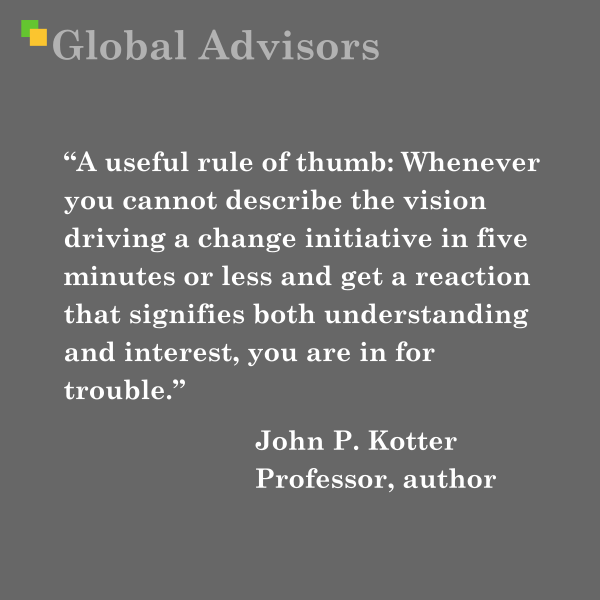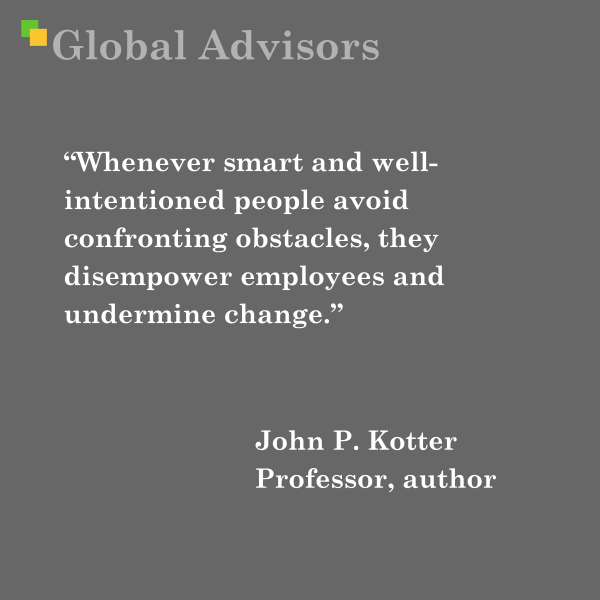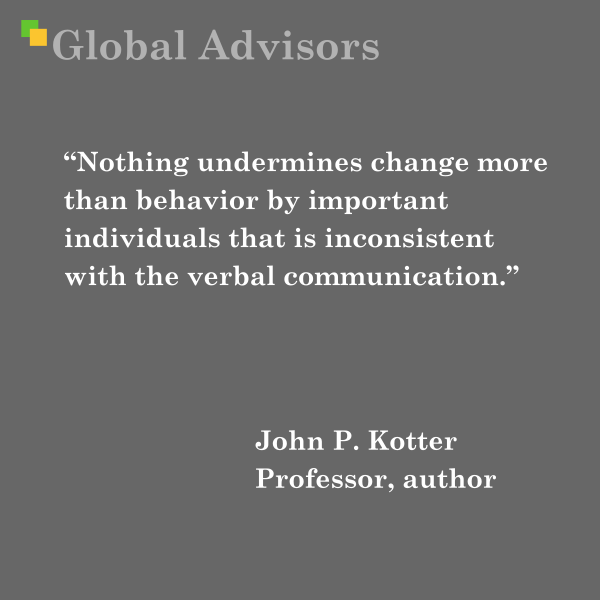“A useful rule of thumb: Whenever you cannot describe the vision driving a change initiative in five minutes or less and get a reaction that signifies both understanding and interest, you are in for trouble.” – John P. Kotter – Professor, author
John P. Kotter’s observation—“A useful rule of thumb: Whenever you cannot describe the vision driving a change initiative in five minutes or less and get a reaction that signifies both understanding and interest, you are in for trouble.”—emerges from decades of rigorous research into the mechanics of organizational transformation and leadership.
The quote distills a critical insight at the heart of Kotter’s renowned work on change management: successful change initiatives hinge on the clarity and communicability of their vision. Drawing upon his extensive study of over 100 organizations undergoing transformation, Kotter discovered that even the most technically sound change efforts falter when the vision behind them is vague, convoluted, or fails to energize those involved. This realization became a cornerstone of his influential framework, emphasizing that a vision must not only provide direction but must also be articulated succinctly—capturing both understanding and enthusiasm from stakeholders in minutes, not hours.
The context for this rule of thumb is rooted in Kotter’s widely adopted “8-Step Process for Leading Change,” first introduced in his 1996 book, Leading Change. In this step-by-step model, the third and fourth steps—form a strategic vision and communicate the vision—underscore the necessity of crafting a compelling narrative for change and ensuring that it resonates organization-wide. Kotter’s research established that if people cannot quickly grasp and feel inspired by the vision, skepticism and resistance are likely to follow, undermining the entire transformation effort.
About John P. Kotter
John P. Kotter is a distinguished professor, author, and pioneer in the field of organizational change. As a long-standing Harvard Business School professor, Kotter has spent his career analyzing what distinguishes successful transformation from failure. His groundbreaking 8-step change model, developed in the mid-1990s, remains one of the most influential frameworks in business strategy and leadership circles worldwide. Kotter’s work emphasizes that enduring change is as much about human dynamics and communication as it is about strategic planning. He is recognized for distilling complex organizational theories into actionable advice, with a particular focus on the importance of urgency, coalition-building, and the communicability of vision.
Contextual Insights
Kotter’s insight is especially relevant in today’s rapidly evolving business landscape, where organizations face constant social, technological, and economic pressures to adapt. His rule serves as both a warning and a guide: If leaders cannot convey the purpose and promise of change in a way that is easily understood and genuinely exciting, it is likely that confusion and inertia will hinder progress.
This quote encapsulates the wisdom that visionary leadership demands not just an inspiring destination, but a message so clear that it can be shared, understood, and embraced across every level of an organization—swiftly and memorably.













